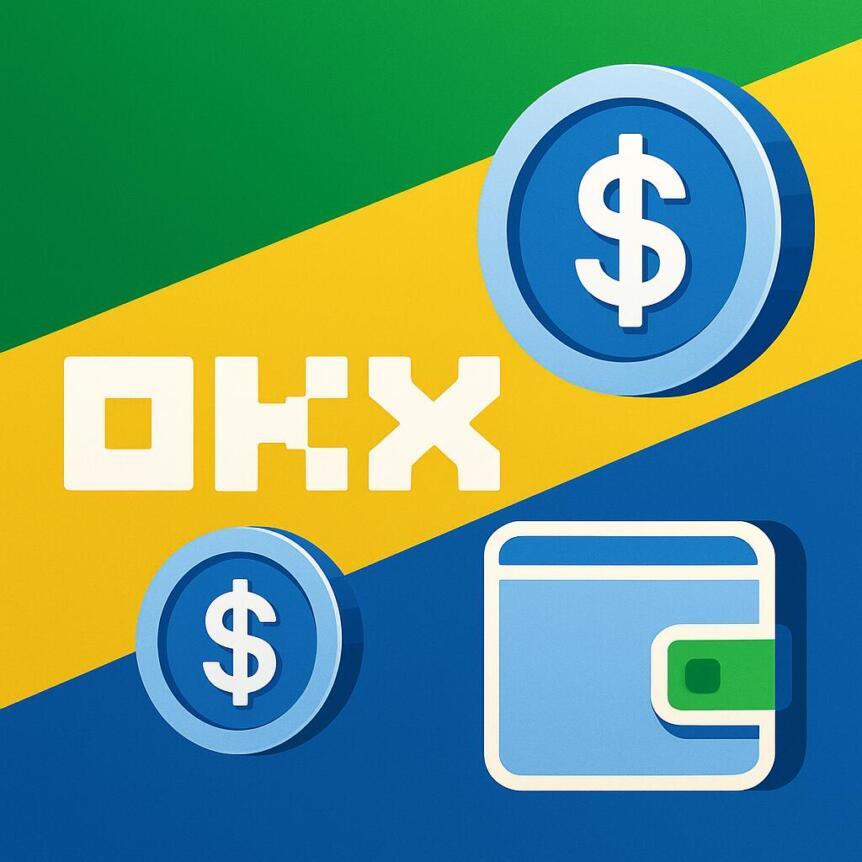
OKX Introduces USD Stablecoin Payments In Brazil-One Step To Inflation-Resistant Finance
In Brazil, a stablecoin has overtaken more than 90 percent of the volume of crypto transactions. Cryptocurrency adoption in the country is the highest in Latin America, and there is high demand for services that offer inflation-resistant savings and effective cross-border payment solutions. With the possibility of converting BRL (Brazilian reais) into USD-stablecoins through the local instant payments system, PIX, OKX is entering an already existing market.
Critical Decisive Factors: Spending, Savings, and Cost-CutsThrough PIX, users can immediately change BRL into USD stablecoins without incurring part of the delays and fees associated with traditional banking.
OKX asserts that its platform funds up to 39 US dollars in fees and taxes on a transaction of 1000 US dollars, as opposed to traditional services.
The platform also has a savings feature: users can generate up to 10% APY on stablecoin balances; it is calculated on a daily basis and paid out weekly, with no lock-up requirements.
The OKX Card is a global debit card (through Mastercard ) tied to stablecoin balances, and it works with such wallets as Apple Pay and Google Wallet.
Brazil's Implications on the Financial LandscapeThis introduction may become a turning point in the savings and expenditure of the Brazilians. As currency risk increases and inflation is high, U.S.-dollar-linked stablecoins provide a good alternative to everyday purchases and savings. By providing yield on the stablecoins, the gap between trading instruments and real-life financial instruments is further closed.
Nevertheless, it presents its own doubts: How would regulators treat USD-denominated savings vehicles implemented via crypto infrastructure? What would be the results in case dollar-stablecoin yields start competing with the old-fashioned bank products? Will the digital dollar emerge as a household name in Brazil or a peripheral product of the crypto-sophisticate?
Challenges & ConsiderationsAlthough the charges are less, users have to have trust in the infrastructure: stablecoin support, exchange custody, and conversion channels.
Brazil has no clear regulatory environment, and the services that are offered with crypto and foreign currency can be subject to scrutiny.
Merchant adoption and seamless integration in daily expenditure is yet to be established on a large scale beyond the early adopters.
ConclusionThe introduction of USD-stablecoin payments and savings services of OKX in Brazil is an indication of a radical move towards digital-dollar finance in the daily lives of people in the emerging markets. Brazil seems poised to take such products due to high local demand, but the key question is whether the spread of usage can take place between the specific niche crypto communities and the general population. In case this model spreads, it may transform the way individuals in Brazil save, spend, and access international finance.
Crypto Investing Risk WarningCrypto assets are highly volatile. Your capital is at risk. Don't invest unless you're prepared to lose all the money you invest.
Legal Disclaimer:
MENAFN provides the
information “as is” without warranty of any kind. We do not accept
any responsibility or liability for the accuracy, content, images,
videos, licenses, completeness, legality, or reliability of the information
contained in this article. If you have any complaints or copyright
issues related to this article, kindly contact the provider above.


















Comments
No comment